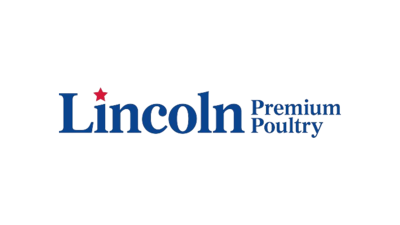Like many food companies, production and quality are critically important functions in the overall operations of Fresca Mexican Foods. While the two are closely related in many ways, they are sometimes disparate groups with their own unique priorities. Adam Doolhoff, Chief Product Officer at Fresca, believed that uniting production and quality would open up areas of opportunity for the company. Yet, it couldn't be done with Fresca's existing tools and processes.
To address the issue, Adam sought out a software solution that would help. In the coming pages, we share details from Adam's firsthand account of how Fresca supported growth by integrating their quality and production systems with the help of SafetyChain software. We'll discuss:
- The challenges and opportunities that prompted Fresca to look for a software solution
- What Fresca's recordkeeping and documentation practices looked like previously
- How Fresca wound up choosing SafetyChain as their software solution
- The implementation approach Fresca used when rolling out SafetyChain
- The benefits and impact of SafetyChain, including how it united production and quality
First, we'll start by looking at the opportunities for improvement Adam saw for Fresca.
What Challenges & Opportunities Led Fresca to Seek Out a Software Solution?
Fresca Mexican Foods is driven by passion. Yet, for all the heart that their teams brought to the company, there was one ongoing challenge that needed to be addressed: a lack of clarity around data. Without the ability to see into all of the facility’s data for an accurate picture of what was going on, information became siloed. These inherent silos led to tension between departments.
Opportunities for Improvement
Recognizing the data visibility challenge first and foremost, Adam uncovered four main areas for opportunity for Fresca that could be realized with the right software solution:
Specs Standardization
To achieve consistency across their entire operation, Fresca would need to rebuild the single version of truth out of five different spec versions. Understandably, expired specs caused false-positive sign-offs. To identify the proper specs, they approached their customers for clarity on what they were expecting.
SPC Woes
While the Fresca team recognized the potential quality improvements and efficiencies that could be gained with an efficient statistical process control (SPC) program, manual approaches were bogging down their efforts. Because data had to be manually entered into spreadsheets, data analysis was delayed three to four weeks. As a result, process improvements were reactionary, but Adam knew that a software solution with SPC capabilities could drive proactive improvements.
Data Standardization
Like many food manufacturers, Fresca was dealing with undocumented data in many groups, sitting and waiting to be leveraged on the plant floor. And, while the quality and production teams shared the same goals, their data tools were decentralized. More than 30 different forms were being filled out on paper or spreadsheets to track quality attributes such as pH, moisture, and temperature, as well as plant data such as downtime logs. After data was entered, it would go unused. To simply gain a visual representation of quality, it required 20 to 30 hours a week of manual data entry. Automated data collection would bring efficiency to the process, while also allowing Fresca to actually use the data they gathered instead of having it filed away.
Leveraging the Team’s Passion
Fresca employees are proud of their product and insistent on providing perfection in terms of quality. Unfortunately, their lack of tools made standardization and mutual trust in processes a challenge. Equipping teams with the right tools would allow Fresca to tap into that passion and enact positive changes across the plant.
To get a better idea of how a software solution would meet these needs, the Fresca team would first need to assess their current practices for collecting data.
What Did Fresca’s Recordkeeping & Documentation Look Like at the Start?
For the heavily regulated food industry, recordkeeping and documentation are essential to ensuring compliance and traceability. Unfortunately, they’re also among the areas with which manufacturers struggle the most. It’s not uncommon to see clipboards, binders, and Excel spreadsheets throughout many modern facilities, but these practices can lead to several challenges.
Sign-Off Processes
Sign-offs are an integral component of recordkeeping, as they verify that records are routinely reviewed. While Fresca had a sign-off system in place before implementing software, there was room for greater efficiency.
For instance, if a sheet that was signed off on was misplaced and an issue went overlooked, it could have taken weeks to be addressed. Moreover, the paper-based documentation made record retrieval and review near-impossible. “You have a room full of filing boxes and no idea what’s in them,” notes Adam. He and the quality team could easily spend up to ten hours looking for specific records, instead of jumping right into the data.
The sheer amount of paper logs that had to be validated was also overwhelming for Fresca management. Again, there were also silos between production and quality: while the two functions are closely related, their separate sign-off processes were yet another inconsistency that needed to be addressed.
Auditing & Quality
Fresca is certified in SQF, a sought-after standard in the food industry. Like many food companies, they enlisted the help of consultants to prepare for and become certified. Yet, they continued to rely on third parties to maintain their certification. Adam saw that Fresca’s Quality Manager didn’t have the leverage to take over SQF certification without the right tools. With a growth mindset and a data-driven approach, however, they could give their internal teams their power back and take ownership of the SQF program without the need for help from third parties.
With these processes in mind, Adam set out to find the perfect software solution to fit Fresca’s needs.
Why Was SafetyChain Selected Over Other Software Solutions?
Fresca had several must-have qualities in mind for the right software solution. To support their high-quality standards, the solution would need SPC and Overall Equipment Effectiveness (OEE) capabilities. It would also need to support unity between the quality and operation groups. And, while it wasn’t a necessity, they did want to get away from paper, so a mobile, cloud-based, and automated solution would be the best fit.
With these needs in mind, Adam was able to quickly weed out other options and determine that SafetyChain would be the best fit. The fact that the platform was larger and allowed for future scalability, rather than more point solutions, was also a compelling advantage. The back-side analytics of the platform was another feature that made SafetyChain stand out, along with its simplicity. The user-friendly, effective tools would allow Fresca employees to do their jobs well and would create an integrated field of work instead of silos.
What Was the Approach for Implementation?
Adam worked with both the internal Fresca team as well as SafetyChain’s experts to determine the best approach for implementation. There was an initial blueprinting process in which Fresca consulted with SafetyChain’s Solutions Architects. From there, they performed process mapping, discussed equipment and facility checks, and examined auditing practices. Along the way, they challenged assumptions—it wouldn’t make sense to automate inefficient processes, but with collaboration from both sides, there was positive pressure that helped uncover gaps and options for adjusting the course.
Prior to the implementation, there was also a data collection deep dive. During this process, Adam and his team revisited and improved data collection processes before beginning the implementation. Like other processes, they challenged data collection methods and investigated options for better practices.
Finally, with their shared knowledge, Fresca tested SafetyChain out during two 12-hour shifts. They soon found that the day and night shifts weren’t lining up regarding SPC—both teams had different perspectives on what they were trying to accomplish. In working with the shifts, Adam was able to pose questions and challenge teams to adjust to conditions such as limited management. With the help of SafetyChain, each shift was able to overcome internal challenges and course correct to drive efficiencies.
How Did the Production & Quality Teams Unite Under Centralized Data?
Implementing SafetyChain led to far-reaching benefits and impacts for Fresca. For one, they were able to meet stringent nutritional requirements for a customer that they wouldn’t have been able to achieve without insights into their data. Now, every tortilla delivers on expectations, and the ability to improve their process for one customer has served as an excellent learning experience for the team. “Why don’t we do this for all customers?” Adam asked himself. Using SafetyChain forms would result in better data for all of their processes, and the ability to edit, test, and share forms with people (including customers) has allowed them to excel in unexpected ways.
Moreover, implementing SafetyChain forced collaboration between the quality and production functions. Now, they look at programs not as quality or production programs, but as Fresca programs. SafetyChain enforced shared ownership, and now every person on the team has a role in sharing or leveraging data.
As a result of the implementation, the FSQA manager felt empowered to take action over previously out-of-control processes. Now, zero paper is used in quality, and 100% of data is collected in real-time and used to make decisions. Also, the ability to end data “babysitting,” which previously took up to 20 hours a week, has resulted in $22,000 in savings.
Finally, implementing SafetyChain has spurred a cycle of continuous improvement. QA helps the lines be more productive, and production is asking better QA questions based on the data. According to Adam, issues are addressed minutes to hours after they arise, not two to three weeks later. Fresca is seeing fewer and fewer complaints and quality concern issues with in-house testing, and is also relying less on external third parties. They’re saving money and identifying more and more opportunities to improve. In fact, the improvements they’ve seen from SafetyChain have been so promising that Fresca has even established a position for an individual to explore further opportunities for improvement.
Conclusion
Fresca was not unique in being a paper-dominated company in the food industry. Yet, their passion, drive, and growth mindset have set them apart and prompted them to find a solution that could help them become even better.
While they faced challenges over specs and data standardization, they knew the right solution would support a more cohesive, unified approach. They also saw opportunities to automate SPC and make process improvements more proactive instead of reactionary. After assessing their current processes and identifying the essential qualities to look for in software, they quickly targeted SafetyChain as the best solution to meet their needs.
With automated OEE and SPC, a scalable platform, and automated, mobile, cloud-based technology, SafetyChain fit the bill for everything Fresca needed. Fresca and SafetyChain collaborated to ace the implementation, and once the solution was rolled out, the company quickly started seeing improvements. From zero paper in their quality department to $22,000 in savings for data management efforts alone, the improvements are staggering and have only grown over time.
As one cohesive unit, Fresca now makes decisions together, whether that’s tackling an issue or simply seeking new ways to improve. Quality and production now work hand-in-hand without silos, and their automated, data-driven approaches have propelled them into new areas of excellence.


